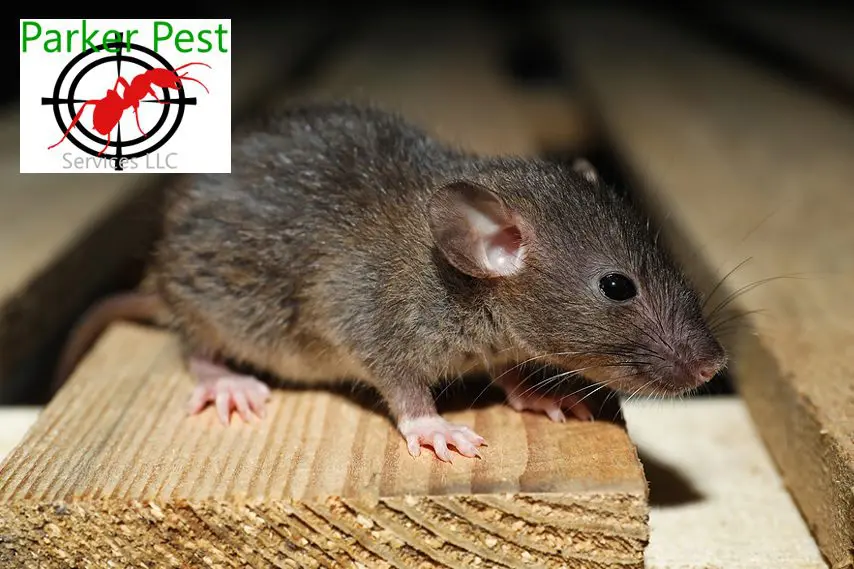Your Action Plan to Get Rid of Santa Fe Rodents in Walls and Attics (Hint – Call Parker Pest Services When You Need Help)

The house mouse is one of many kinds of mice that live in the wild, but it gets its name from its propensity to seek shelter in human structures, particularly within the walls and attics of residential buildings. The length of an adult house mouse can range anywhere from 2.25 to 3.75 inches, and its fur is often a dusty grey tint with a cream-colored underside. Mice are well recognized for their capacity to adapt to rugged surroundings and quick reproduction rate, even though they have an everyday look. A single female house mouse can give birth to up to 35 offspring every year. Continue reading to find out more, including information on the eradication of mice from your walls or attic, which is included in the report.
Risks
It is essential to take measures to prevent mice from moving into your home. An infestation of rodents is not only an annoyance, but it also poses several significant threats to a person’s health. Mice that live in homes can harbor germs, transmit illnesses, and pollute food sources. Particles of their excrement and urine can even get airborne, furthering the spread of disease and perhaps causing symptoms of asthma or allergies in those who are susceptible to them. In addition, because of the high frequency with which house mice defecate, their waste can quickly collect in the concealed areas of your home, such as the interior of walls and the gaps within the attic. Mice in your house may also unwittingly bring in other pests, such as fleas, ticks, mites, and lice, all of which can carry germs and illnesses into your home. House mice can bring in other pests without even realizing it.
Be on the lookout for evidence of activity in your houses, such as mouse droppings, pee stains, or food containers that have been broken, if you have reason to believe that mice may be living there. To eradicate mice from walls, attics, and other areas of the house, we strongly advise getting in touch with a qualified pest control expert. In addition, you should seek immediate medical assistance if you or a member of your family begins displaying signs of a sickness related to rodents.
Advice on Avoiding Issues
The good news is that there are several steps that property owners may take to reduce the likelihood of having mice take up residence in areas such as the walls and the attic. Because mice may get into spaces as small as a cent, it is essential to seal any holes or crevices in your property that could serve as rodent entryways. Precautions such as installing door sweep on exterior doors, repairing damaged screens, screening vents and openings to chimneys, sealing cracks and holes on the exterior of the home, and replacing loose mortar and weather stripping are all helpful ways to eliminate possible exterior entry points that house mice may use to enter the home.
In addition to sealing up potential access points, removing likely mouse magnets, such as sources of food and water, and hiding places inside the home is essential. Keep food sealed in airtight containers, empty the trash regularly, keep garages and closets clear of clutter, ensure that attics and crawl spaces are well-ventilated and dry, keep firewood at least 20 feet away from the house, and maintain well-trimmed shrubbery. These steps will help reduce the risk of pest infestation. Homeowners can lessen the possibility that mice may move into their homes in search of food or refuge if they adhere to these straightforward recommendations.
Warning Signs
It would help if you kept an eye out for a few crucial symptoms that might suggest you have mice in or near your house. These signs include the following: You may start to run into their garbage. The droppings of a house mouse can be either soft and wet or dry and firm. The length of the droppings ranges from around 0.125 to 0.25 inches, and they often take the form of rods with pointy tips. The urine of the house mouse also has a characteristic odor that is like that of ammonia. That will likely be a glaring sign that unwelcome guests have invaded your home.
The presence of house mice may typically be deduced from the telltale signs of their activity around your home. When traveling around, rodents frequently utilize the same paths, which results in plainly discernible trails of rub marks, droppings, and footprints. The front feet of a house mouse leave prints with four toes, while the back feet leave images with five toes. Additionally, the mouse’s body leaves oily rubbing impressions on the walls along which it travels. Gnaw marks around dwellings might be rough or smooth, depending on whether the mice which caused them were house mice. In addition, they will construct burrows using things like insulation, and they will consume any seeds, grains, or insects they find in your house. So, if you ever encounter a real mouse inside your home, you should know that it is probably only one of many hidden nearby but out of sight.
Treatment
If you could have an infestation of house mice in your home, you should contact a pest control specialist as soon as possible. Mice can be a nuisance in many parts of your home, including the walls, the attic, and other areas. Professionals trained and licensed in pest control know how to get rid of mice in your home quickly and safely. Call the pros at Parker Pest Services when you have mice for Santa Fe rodent control services. We can be reached at 505-401-9380!
